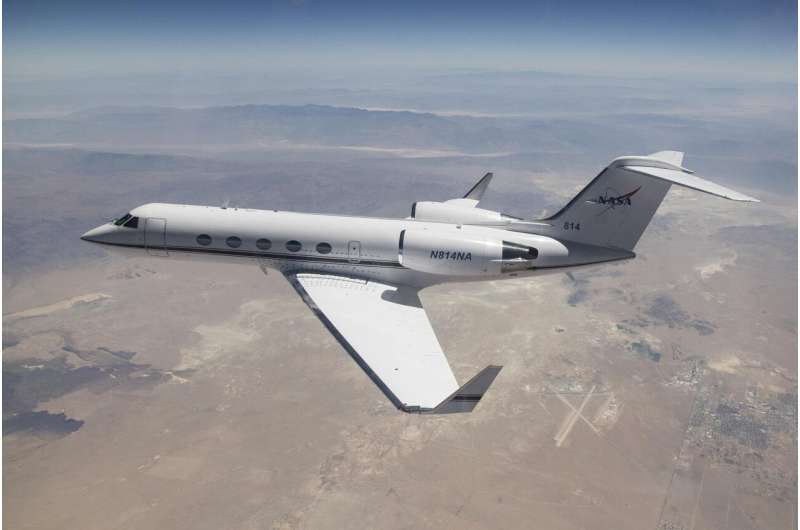This article has been reviewed according to Science X's editorial process and policies. Editors have highlighted the following attributes while ensuring the content's credibility:
fact-checked
trusted source
proofread
NASA G-IV plane will carry next-generation science instrument

In June 2024, a new tail number swept the sky above NASA's Armstrong Flight Research Center in Edwards, California. Pilots conducted flights of a Gulfstream IV (G-IV) to evaluate its handling characteristics and to familiarize pilots with it before it begins structural modifications. The research plane is joining the center's fleet serving NASA's Airborne Science program.
The G-IV will carry the Next Generation Airborne Synthetic Aperture Radar (AIRSAR-NG), which sends and receives microwave signals to collect information about Earth's topographic features and how they change over time. The goal for the team at NASA Armstrong is to modify the G-IV to accommodate three radars simultaneously.
"The AIRSAR-NG will be composed of three different Synthetic Aperture Radar antennas in one instrument to provide new insight into Earth's surface more efficiently," said Yunling Lou, principal investigator for the instrument at NASA's Jet Propulsion Laboratory in Southern California.
"The capabilities of this new instrument will facilitate new techniques, such as three-dimensional imaging, that will be useful for future space-borne missions."
With those and other modifications being made, the G-IV will also be able to accommodate an increased load of science instruments, which could enable NASA to support more dynamic airborne science missions.
"This aircraft will aid Armstrong in continuing our long history of supporting airborne science for the agency and maintain the expertise in conducting successful science missions for years to come," said Franzeska Becker, the G-IV project manager at NASA Armstrong.
Transferred in February from NASA's Langley Research Center in Hampton, Virginia, the G-IV will undergo additional modifications overseen by NASA Armstrong's team. Their goal is to enrich the agency's airborne science program by outfitting the aircraft to function as a more capable and versatile research platform.
The knowledge and expertise of professionals at NASA centers like Armstrong (G-IV, ER-2, C-20) and Langley (777, G-III) will help enable the agency to produce a well-defined and airworthy platform for science instruments and airborne science missions.
Provided by NASA




















